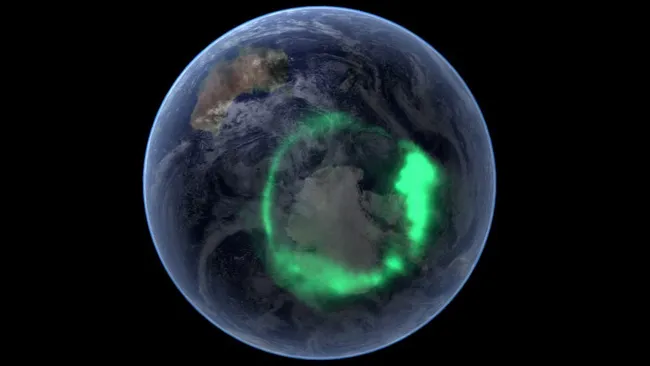Earth may be floating in an ocean of dark matter, and waves in this invisible ocean hitting our planet’s upper atmosphere could produce detectable radio waves, allowing us to eventually find this elusive component of the universe, according to new theoretical research.
A wealth of astrophysical and cosmological evidence points to the existence of dark matter, from the surprising rotation curves of some galaxies to the growth of the largest structures in the universe. Efforts to explain this wide variety of observations with alternative formulations of gravity have failed; Therefore, the vast majority of astronomers believe that dark matter is an unknown form of matter that rarely interacts with light or normal matter.
But this is a very broad idea that covers many possibilities. Dark matter may consist of very large particles, but the search for such particles has been largely futile. An intriguing alternative, therefore, is that dark matter is extremely light, either in the form of theoretical particles known as “axions” or as an exotic form of the photon that carries some mass.
Because of its incredible lightness (millions of times lighter than the lightest known particles), dark matter can behave in very strange ways. In particular, instead of appearing as individual spiky balls, dark matter will behave like huge waves hurtling around the cosmos.
In a recent study published on the arXiv preprint server, physicists discovered models of ultralight dark matter that are not completely dark and allow it to interact very rarely with ordinary matter. In most cases, these interactions are barely recorded and yield nothing noticeable. But in rare cases, dark matter and ordinary matter interacted so much that they created significant amounts of radio waves.
This will happen when dark matter collides with plasma and the frequency of dark matter waves coincides with the frequency of plasma waves. The team’s models suggested that when this happens, a resonance will occur that will strengthen the interaction and create radiation in the form of radio waves.
Plasma is not alien to the universe; all stars eject plasma into space as stellar wind; hence theorists have already investigated the production of radio waves by dark matter interacting with environments such as the solar corona or the interstellar medium. But in this new study, scientists found a point of interaction much closer to us: our planet’s ionosphere.
Earth’s ionosphere is a thin, hot layer of the upper atmosphere consisting of a loose collection of ionized (charged) particles (plasma). Naturally, waves pass through it, and researchers have discovered that these waves can interact with hypothetical dark matter waves that could wash over the Earth.
The radio waves created by this interaction are barely noticeable. But researchers found that they could detect these waves by using a radio antenna carefully tuned to look for a specific frequency of radio waves throughout the year.
This idea is particularly promising because Earth’s ionosphere has many advantages over other sources of radio waves created by dark matter. First, the ionosphere naturally reflects many radio waves from deep space, making it relatively free of pollution signals. Second, the ionosphere is directly above us, is easily accessible, and is currently subject to constant monitoring and scrutiny.
This is a long shot. This form of dark matter is highly theoretical, and it will take years, if not decades, to perfect observation techniques to find these radio waves. But if it works, it will be a gold mine, allowing us to study one of the most mysterious elements in the universe right on our cosmic doorstep.













